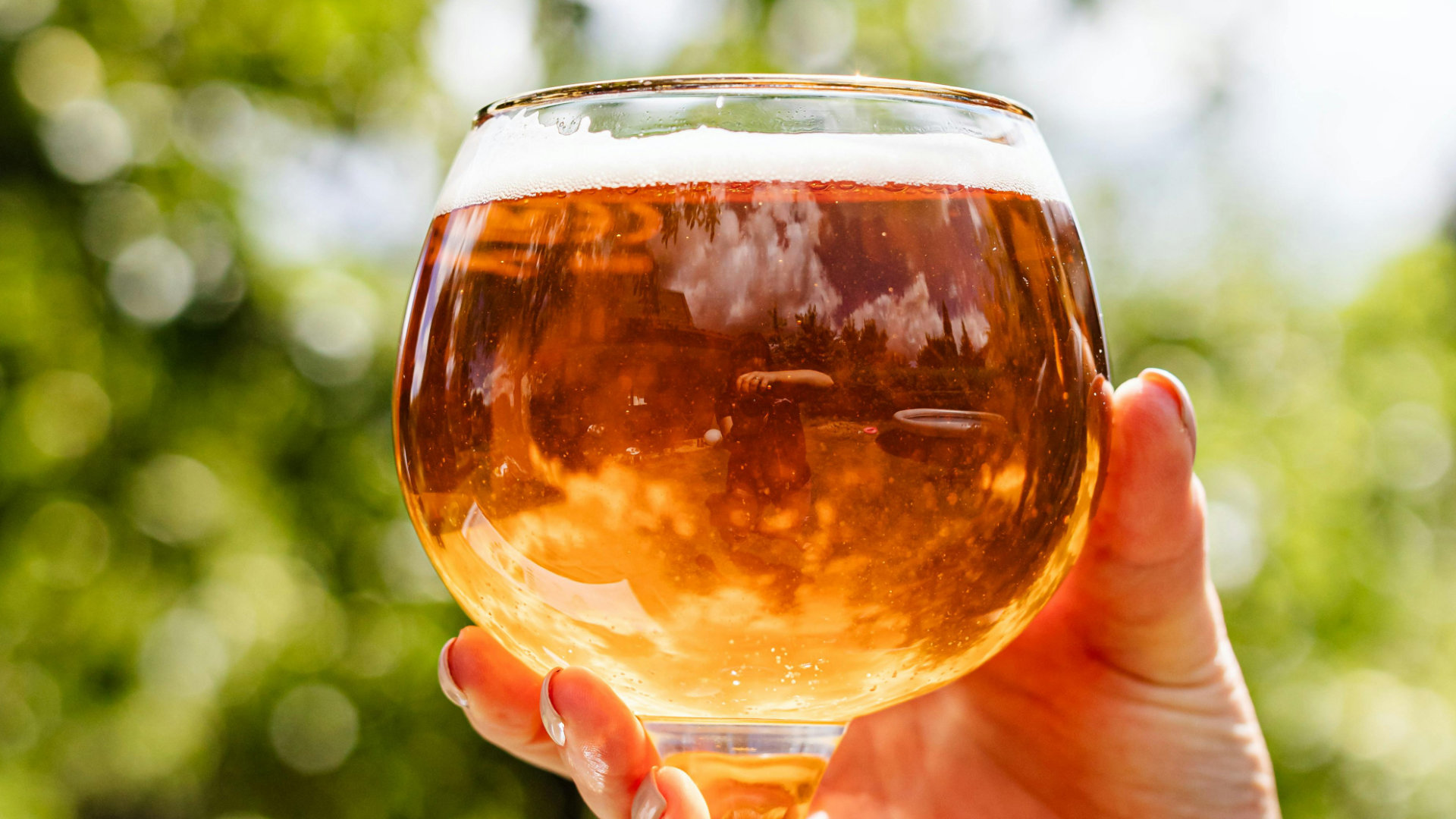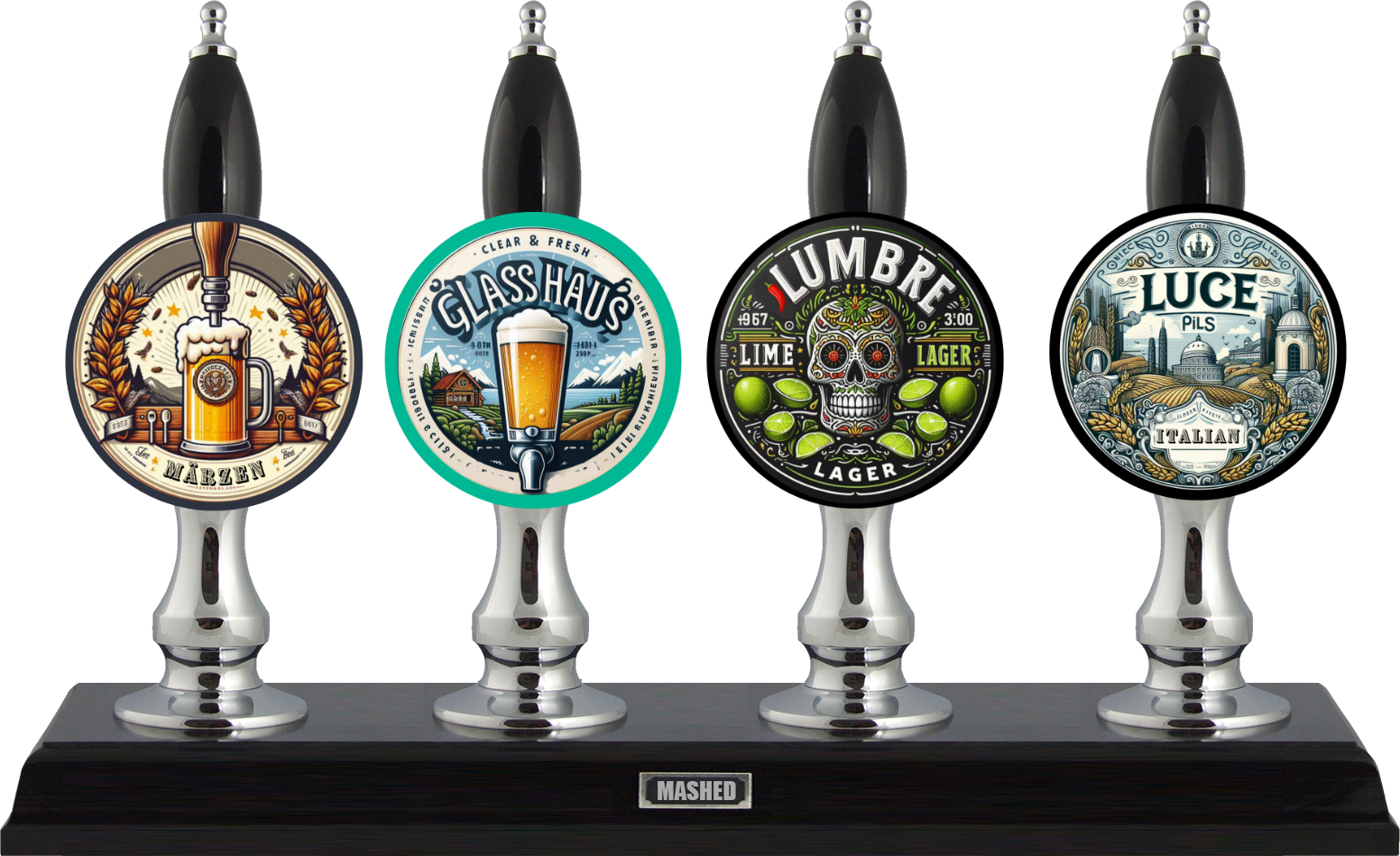In the haze of a lazy afternoon, or at the tail end of a long beery evening, few drinks offer the same effortless refreshment as a shandy or a radler. These beer-based blends have long been the go-to for drinkers seeking something light, bright and sessionable. But while they may seem interchangeable, their histories and cultural footprints tell two distinct stories.
Both shandies and radlers share a common DNA: a 50/50 mix of beer and something fizzy, fruity or sweet. They’re perfect for warm weather or when you’re in the mood for beer, but not beer. Or as an alternative to cider. But while the shandy is steeped in British tradition and pub culture, the radler stems from continental Europe, and is often associated with cycling, hiking and outdoor leisure.
The shandy’s roots stretch back to Victorian times, where it was originally known as shandygaff and was made by mixing beer and ginger beer or lemonade. In ‘The Adventures of Mr. Verdant Green’ by Cuthbert Bede, the pseudonym of Edward Bradley, published in 1853, the protagonist Verdant Green is quizzed by his parents on what he has learned during his first year at Oxford. ‘“Why," replied our hero, as he reflected on his freshman’s career, "I have learnt to think for myself...I can smoke a weed - a cigar, you know. I’ve learnt that…and to make shandy-gaff… oh, it’s capital!”’
Over time the name shortened to simply shandy and was generally made with lemonade rather than ginger beer. Shandies became a staple of pub culture, often ordered as bitter shandy or lager shandy, depending on the base beer.
Today, with their lower alcohol content and easy-drinking profile, shandies are enjoying a revival, with craft brewers and bartenders experimenting with various mixers to elevate the classic blend. They’re not just for summer, though! As we head towards the cooler time of year, a shandy made with ginger ale or ginger beer is a great option for a warming alternative to the traditional lemonade mixer.
Theradler, by contrast, hails from Germany - its origin story born from practicality. In 1922, Bavarian innkeeper Franz Kugler faced a dilemma: a swarm of thirsty cyclists had descended on his beer garden, and he was running low on beer. Thinking fast, he mixed what he had with lemonade and dubbed it Radlermass - literally, ‘cyclist’s liter.’ The name stuck, and the radler became a staple of German beer gardens.
Unlike the shandy, which traditionally leans solely on lemonade or ginger beer, the radler is more flexible. Grapefruit, orange and even herbal sodas are common mixers, and these days the drink is often pre-packaged and sold in cans. Variants from the Russ’n (wheat beer and lemonade) and the Austrian Almradler (using herbal soda) to a modern dry-hopped pilsner with blood orange juice show just how diverse the radler family has become.
Try These
When it comes to shandies, the folks at Shandy Shack are the pros. They’ve been specialising in craft shandies since 2018 when they started exploring ways to lower their booze units and reduce their hangovers. Here are three great shandies from Shandy Shack to try, all are gluten-free and vegan too:
IPA Shandy (2.8% ABV) - a golden, hop-packed session IPA perfectly paired with fresh lemonade. For malty warmth, crack open a Ginger Beer Shandy (2.2% ABV) - tasty pale ale spiced with a generous glug of fiery ginger beer. If you want a blast of ripe berries, get stuck into their Raspberry Lager (2.5% ABV) - a refreshing pilsner with a dash of Bottlegreen® raspberry cordial.
www.shandyshack.co.uk
Left Handed Giant
Pink Lemonade Radler (2.5% ABV)
A delicious and refreshing low alcohol radler brewed on a light and fragrant pale ale base with their homemade pink lemonade. ‘Expect bright raspberry tartness, a sweet juicy dose of lemon, mellow bitterness and a thirst-quenching hit of zest to finish’, says LHG. This one’s a silver medal winner in the Low/No Ales category at the 2025 International Beer Challenge too!
lefthandedgiant.com
Vault City Pear, Lime and Elderberry Radler (3.4% ABV) ‘Breaking away from our usual sour style’, say the Vault City gang, ‘we’ve blended fresh pear, bright elderberry and a hint of lime to create something light, juicy, and effortlessly crushable, rounded out by bright citrus and soft floral notes from Saphir hops.’ vaultcity.co.uk
All Grain Recipe: Citrus Radler
Batch Size: 20L (before blending)
ABV: 2.5 - 3% after dilution
IBU: 18 (mild)
Colour: SRM 3
Flavour Profile
Aroma: Zesty lemon peel, floral hops.
Taste: Bright, tangy citrus balanced by crisp malt.
Mouthfeel: Light, effervescent.
Step 1: Brew the Base Lager
Grain Bill
3.2 kg Pilsner Malt
0.6 kg Vienna Malt – gentle malt backbone
0.2 kg Carapils – foam retention and smoothness
Hops
20g Hallertau Mittelfrüh @ 60 min
10g Saaz @ flameout – delicate aroma
Yeast: WHC Lab Blitz Lager. Ferment at 16-20°C for 10 days, lager for 3+ weeks at 2°C.
Step 2: Create the Citrus Mixer
Just before packaging, prepare your soda:
Option A: Classic Lemonade
20 x large lemons, squeezed
800g castor sugar
8.5L sparkling water
Mix lemon juice and sugar until dissolved. Add the sparkling water and chill.
Option B: Grapefruit Radler
Replace lemon juice with grapefruit juice (from approx 10 grapefruit). Add a pinch of salt and lime zest for an extra lift.
Step 3: Blend and Package
Blend 1:1 lager and fruit soda in keg or bottling bucket.
Carbonate to 2.7–3.0 vols CO?.
Serve cold in tall glasses with lemon slices or grapefruit twists. ?





.jpg)





